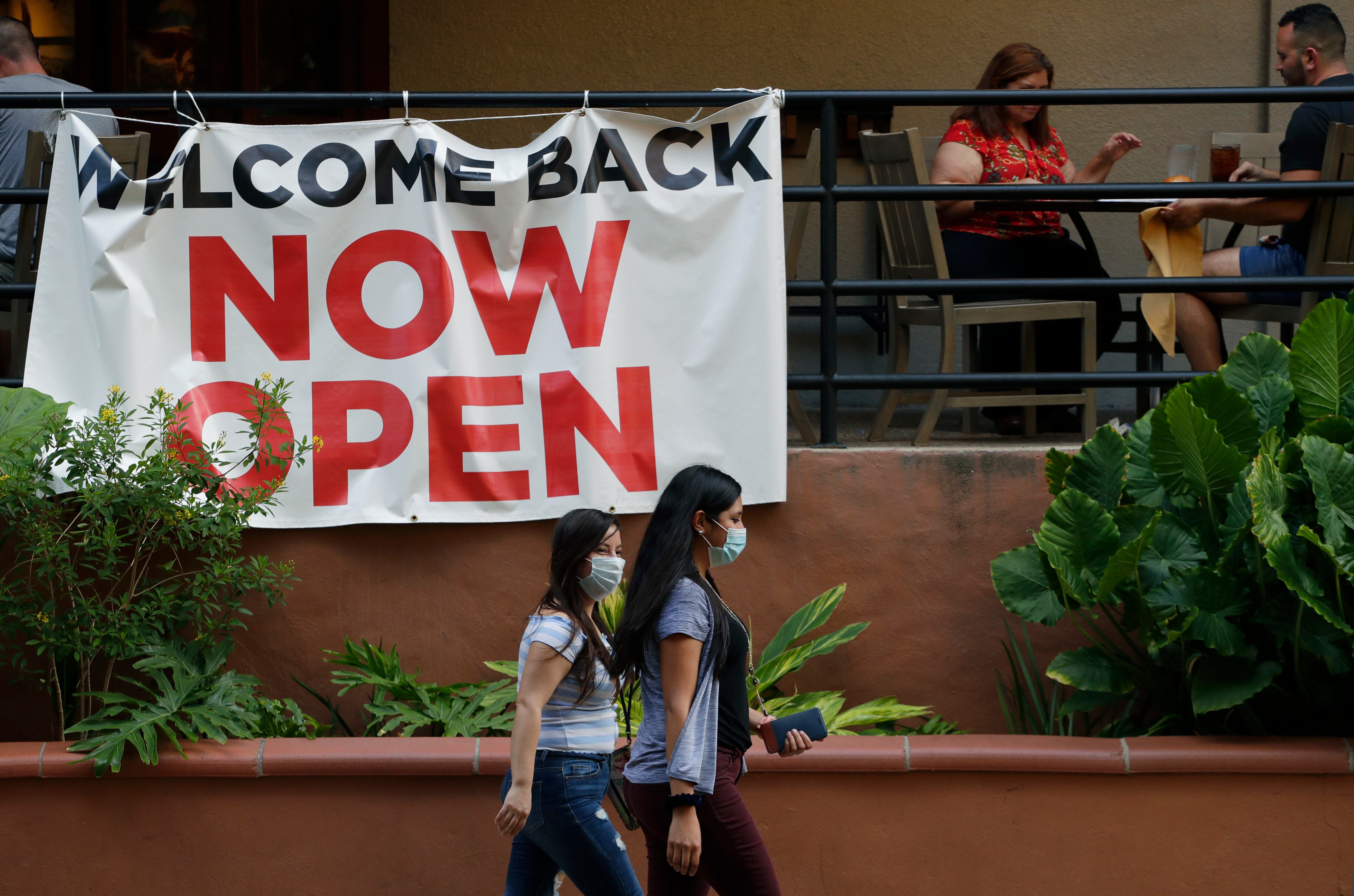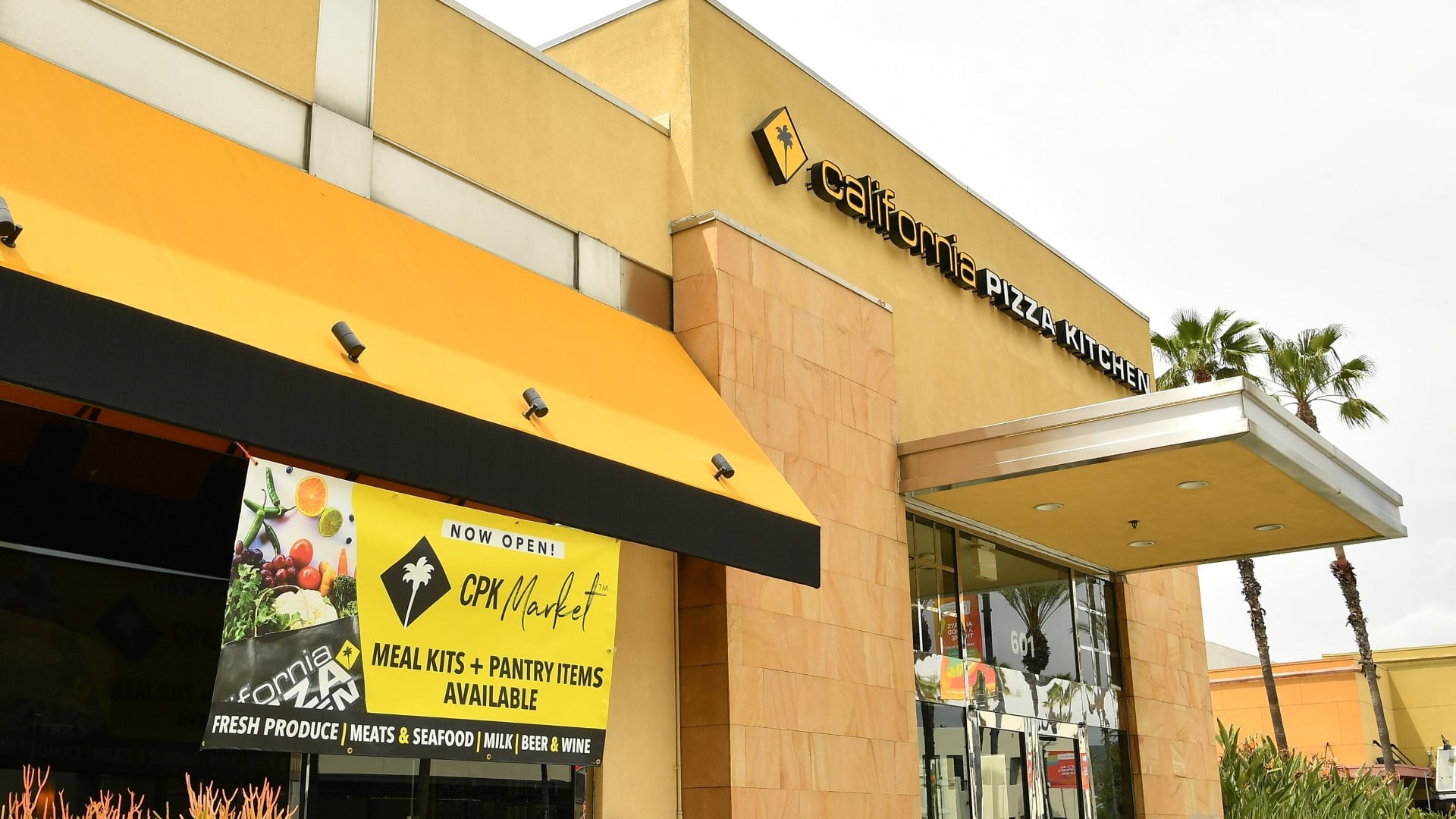By Mike Stobbe
Updated 3:25 pm ET
States are rolling back lockdowns, but the coronavirus isn't done with the U.S.
Cases are rising in nearly half the states, according to an Associated Press analysis, a worrying trend that could intensify as people return to work and venture out during the summer.
In Arizona, hospitals have been told to prepare for the worst. Texas has more hospitalized COVID-19 patients than at any time before. And the governor of North Carolina said recent jumps caused him to rethink plans to reopen schools or businesses.
There is no single reason for the surges. In some cases, more testing has revealed more cases. In others, local outbreaks are big enough to push statewide tallies higher. But experts think at least some are due to lifting stay-at-home orders, school and business closures, and other restrictions put in place during the spring to stem the virus's spread.
The increase in infections pulled stocks down sharply Thursday on Wall Street, dragging the Dow Jones Industrial Average more than 1,500 points lower and placing the S&P 500 on track for its worst day in nearly three months. The infections dampened recent optimism that the reopening of businesses would drive a relatively quick economic recovery.
The virus is also gradually fanning out.
“It is a disaster that spreads,” said Dr. Jay Butler, who oversees coronavirus response work at the U.S. Centers for Disease Control and Prevention. “It’s not like there’s an entire continental seismic shift and everyone feels the shaking all at once.”
That is also happening globally. Places that suffered early on such as China, Italy and Spain have calmed down but Brazil, India and other countries that were spared initially are seeing large increases. The world is seeing more than 100,000 newly-confirmed cases every day, according to data from Johns Hopkins University.
The virus first landed on the U.S. coasts, carried by international travelers infected abroad. For months, the epicenter was in northeastern states. More recently, the biggest increases have been in the South and the West.
The AP analyzed data compiled by The COVID Tracking Project, a volunteer organization that collects coronavirus testing data in the United States. The analysis found that in 21 states as of Monday, the rolling seven-day average of new cases per capita was higher than the average seven days earlier.
Some worry the situation may get worse as social distancing restrictions lift and more people gather. One concern is that large recent racial justice protests across the country might spark at least some spread of the virus.
Another: President Donald Trump this week said he’s planning to hold rallies that may draw thousands of people. He will hold them in four states — Arizona, Florida, Oklahoma, and Texas. All of them are among the states with rising cases identified in the AP analysis.
Here's what's driving increases in some of the states with notable upticks:
ARIZONA
Republican Gov. Doug Ducey ended Arizona’s stay-at-home order on May 15 and eased restrictions on businesses. Arizona residents who were cooped up for six weeks flooded Phoenix-area bar districts, ignoring social distancing guidelines.
The state began seeing a surge of new cases and hospitalizations about 10 days later.
“It seems pretty clear to me that what we’re seeing is directly related to the end of the stay-at-home order,” said Will Humble, executive director of the Arizona Public Health Association.
It wasn’t just that the order ended: There were no requirements to wear face masks, no major increases in contact tracing to spot and stop evolving outbreaks, and no scale-up of infection control at nursing homes, he said.
“Those are missed opportunities that, if implemented today, could still make a big difference,” said Humble, a former director of the state Department of Health Services.
Testing has been increasing in Arizona, which raises the chance of finding new cases. But the proportion of tests coming back positive has also been on the rise.
The AP analysis found Arizona had a rolling average of fewer than 400 new cases a day at the time the shutdown was lifted, but it shot up two weeks later and surpassed 1,000 new cases a day by early this week. Hospitalizations have also risen dramatically, hitting the 1,200 mark last week.
The state also passed another grim milestone last week, recording its 1,000th death.
Meanwhile Arizona hospitals reported they were at 83% of capacity Tuesday, which could force the cancellation of elective surgeries. An executive order Ducey issued in April said hospitals wanting to resume elective surgeries had to have at least 20% of their beds available.
NORTH CAROLINA
In North Carolina, more testing plus more people out and about during reopening seem to be the main drivers of recent case upticks, said Kimberly Powers, an associate professor of epidemiology at the University of North Carolina.
On Saturday, the state recorded its highest single-day increase, with 1,370. While testing has grown in the last two weeks, so has the rate of tests coming back positive.
“These trends moving in the wrong direction is a signal we need to take very seriously,” said North Carolina's top health official, Mandy Cohen, who along with Democratic Gov. Roy Cooper has urged the public to take precautions to protect themselves.
But some state residents are not on board.
“I think they should start opening stuff a little bit more," said Jason Denton, an electrician from Greenville who said one of his main concerns was getting to the gym.
“That’s like my therapy," he said.
TEXAS
Few states are rebooting faster than Texas, where hospitalizations surged past 2,100 on Wednesday for the first time during the pandemic. That's a 42% increase in patients since Memorial Day weekend when beachgoers swarmed Texas’ coastline and a water park near Houston opened to big crowds in defiance of Republican Gov. Greg Abbott’s orders.
Texas’ percentage of tests coming back positive has also jumped to levels that are among the nation's highest. State officials point to hot spots at meatpacking plants and prisons in rural counties, where thousands of new cases have cropped up, but have not offered explanations for a rise in numbers elsewhere.
Abbott, who has recently begun wearing a mask in public, has shown no intention of pumping the brake on reopening a state where protesters in May pressured him to speed up the timeline on getting hair salons back in business.
On Friday, Texas is set to lift even more restrictions and let restaurant dining rooms reopen at nearly full capacity.
ALABAMA
In Alabama, outbreaks in nursing homes and poultry plants helped drive state numbers upward, though there was a drop more recently. But that may change — there is evidence of community transmission in the capital, Montgomery, which has become an emerging hot spot, said State Health Officer Scott Harris.
“I think reopening the economy gave a lot of people the wrong impression ... that, ‘Hey everything is fine. Let’s go back to normal,’” Harris said. “Clearly, it is not that way. Really, now more than ever we need people to stay 6 feet apart, wear face coverings and wash their hands.”
Montgomery hospital intensive care units are as busy as during flu season.
“I can assure you that Montgomery’s cases are not going down, and if our community does not take this seriously, the virus will continue to spread, and at some point, our medical capacity will reach its limit,” Dr. David Thrasher, director of respiratory therapy at Jackson Hospital, said in a statement.
ARKANSAS
Arkansas has also seen increases — in cases, hospitalizations and the percentage of tests that come back positive. But the state's situation is a complicated story of different outbreaks at different times, said Dr. Nate Smith, director of the Arkansas Department of Health.
After a peak in April, levels were low until spikes began about three weeks ago — mainly in the cities of Rogers and Springdale in the northwest and in De Queen further south. The cases have been concentrated among Hispanics and those who work in chicken production facilities, which never were closed.
Republican Gov. Asa Hutchinson on Wednesday said the state will move into a new phase of reopening, starting Monday.
LOOKING AHEAD
Experts are wondering what will happen in the next week or so, in the wake of nationwide protests following the death of George Floyd at the hands of police.
The protests were outdoors, which reduces the likelihood of virus spread, and many participants have worn masks and taken other precautions. But it's a lot of people close together, chanting, singing and yelling.
“Hopefully we won't see a big spike. But those data aren’t in yet,” Humble said.
___
Associated Press reporters Bob Christie in Phoenix; Paul Weber in Austin, Texas; Andrew DeMillo in Little Rock, Arkansas; Kim Chandler in Montgomery, Alabama; and Bryan Anderson and Allen G. Breed in Raleigh, North Carolina contributed.









